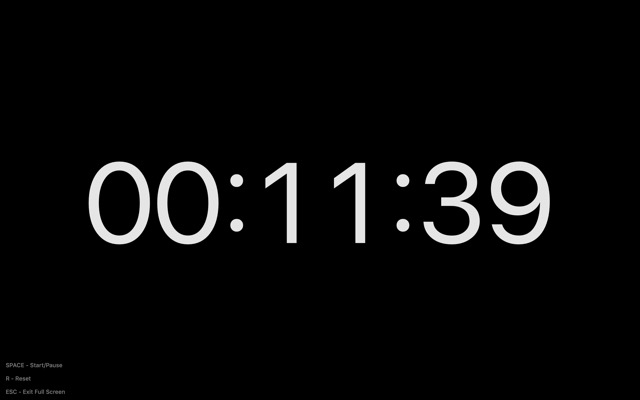Along with major chords, minor chords are the first type of chords one learns as a piano or keyboard student. They are among the most basic and easiest of chords to play on the piano. When learning to play piano, start with major then move to minor triads or chords.
Homepage for font “Notesey” 7.89 Click on the stars to rate this FontStruction. Balanced Rating: 7.89 Average Rating: 9.00 Click for more information about this rating. 1 vote You voted? For this FontStruction. Corbin Bleu Reivers (born February 21, 1989),1 known professionally as Corbin Bleu, is an American actor, model, dancer, and singer-songwriter. He is perhaps best known for his roles in the High School Musical film series, the Discovery Kids television series Flight 29 Down, and the Disney Channel Original Movie Jump In! He also pursued a solo career and released his debut album Another Side.
This type of chord is called a triad due to the fact that it has only these three notes: a root, a minor third and a perfect fifth. For example, the chord A minor consists of the root note, A, a minor third, C, and a perfect fifth, E. The minor third is 3 half steps above the root note, while the perfect fifth is 7 half steps above the root note, or 4 half steps above the minor third.
I wrote this amazing book that will help you with your chords. Click here to get your copy at a discounted price.
To build a minor chord using semitones, start with the root note of the chord or the note which gives the chord its name. Then go three semitones higher than the root to get your second note. To get the third note in the chord, add the note that is 7 semitones higher than the root note. The formula is R + 3HS + 4 HS (root plus 3 half steps + 4 half steps).
Minor chords are represented by the symbols “m”, “min” and “-“. For example, Bm, Bmin and B- all mean the same, although, B- is less common than the other two.
A minor triad can also be described as a minor third interval with a major third interval on top. For instance, for the chord A minor (Am), the interval from A to C is a minor third interval, while the interval from C to E is a major third interval.
If you already know how to play a major chord, it’s very easy to play the minor. All you have to do is move that middle note, one semitone lower. For instance to make C major a minor chord, instead of playing C – E – G, play the note that is one semitone lower than E. Play the black key immediately to the left of E, the note, Eb (E flat). This results in the chord, C minor.
To learn more about this chord and others, check out my course, Piano Chords: How To Form Basic Chords On Piano And Keyboard.
Minor chords in all 12 keys (Chords and notes that make up that chord starting with the root, followed by minor third, then perfect fifth)
- C minor: C – Eb – G
- C sharp minor: C# – E – G#
- D flat minor: Db – Fb (E) – Ab
- D minor: D – F – A
- D sharp minor: D# – F# – A#
- E flat minor: Eb – Gb – Bb
- E minor: E – G – B
- F minor: F – Ab – C
- F sharp minor: F# – A – C#
- G flat minor: Gb – Bbb (A) – Db
- G minor: G – Bb – D
- G sharp minor: G# – B – D#
- A flat minor: Ab – Cb (B) – Eb
- A minor: A – C – E
- A sharp minor: A# – C# – E#
- B flat minor: Bb – Db – F
- B minor: B – D – F#
Some of the notes/chords have different names but on piano you play the same keys. These are known as enharmonics. For instance, C# is the enharmonic equivalent of Db, F# is the enharmonic equivalent of Gb, Eb is the enharmonic equivalent of D#, and so on.
Minor chords are said to create a sad mood when used in a song, while major chords give you that happy feeling.


Root Position and Inversions
Until now, we have only looked at this chord in root position. In root position, you start with the root note, then play the minor third, then the perfect fifth. For example, E minor in root position is E – G – B (1 – 3 – 5). Let’s now look at two inversions of minor chords.
For the first inversion of the chord, the notes are held in the order (3 – 5 – 1). For example, for the E min chord, the first note would now be G, then B, followed by E. In other words, play the note, E one octave higher. This gives you G – B – E.
For the second inversion of the chord, the notes are held in the order 5 – 1 – 3. Using the same E min example, the notes are B – E – G.
There are patterns that can help you recognize all 12 minor chords.
Three of these chords follow the pattern white key, black key, white key, They are C min, F min and G min.
The second three chords are made up of white keys only. They are D min, E min and A min.
The third set of chords follow the pattern, black key, white key, black key. These are Db minor, Ab minor and Gb minor.
The fourth set of chords are odd. Eb minor is made up of black keys only. Bb minor is made up of the pattern black key, black key, white key. While B minor is made up of the pattern white key, white key, black key.
Hope you enjoyed this lesson. For more information on minor chords, I highly recommend PianoForAll piano course. Check it out here.
Comments
comments
full title The Strange Case of Dr. Jekyll and Mr. Hyde
author Robert Louis Stevenson

type of work Novel
genre Gothic mystery story
language English
time and place written 1885, Bournemouth, England
date of first publication January 1886
publisher Longmans, Green and Co.
Notsey Germany

narrator The narrator is anonymous and speaks in the third person.Dr. Lanyon and Dr. Jekyll each narrate one chapter of the novelvia a confessional letter.
point of view For most of the novel, the narrative follows Utterson’spoint of view; in the last two chapters, Lanyon and Jekyll reporttheir experiences from their own perspectives.
tone Mysterious; serious
tense Past
setting (time) The late nineteenth century
setting (place) London
protagonist Henry Jekyll
major conflict Jekyll attempts to keep his dark half, Edward Hyde, under controland then to prevent himself from becoming Hyde permanently.
rising action Utterson attempts to discover the truth about the Jekyll-Hyde relationship.

climax One could argue for two different climaxes. The momentwhen Utterson breaks down the door to Jekyll’s laboratory and finds Hyde’scorpse constitutes a climax in that Utterson finally admits andaccepts that something terribly wrong has taken place. But one mightalso see the novel’s climax as arising within Lanyon’s letter, atthe moment that he witnesses Hyde’s transformation into Jekyll andthe mysterious connection between the personas is finally explained.
falling action Utterson leaves Jekyll’s laboratory, goes home, andreads the letters from Lanyon and Jekyll, which explain all.
themes The duality of human nature; the importance of reputation
Notsey
motifs Violence against innocents; silence; urban terror
symbols Jekyll’s house and laboratory; Hyde’s physical appearance
Notasyacordes Com
foreshadowing While a general mood of impending disaster pervadesthe novel, there are few instances of explicit foreshadowing.
